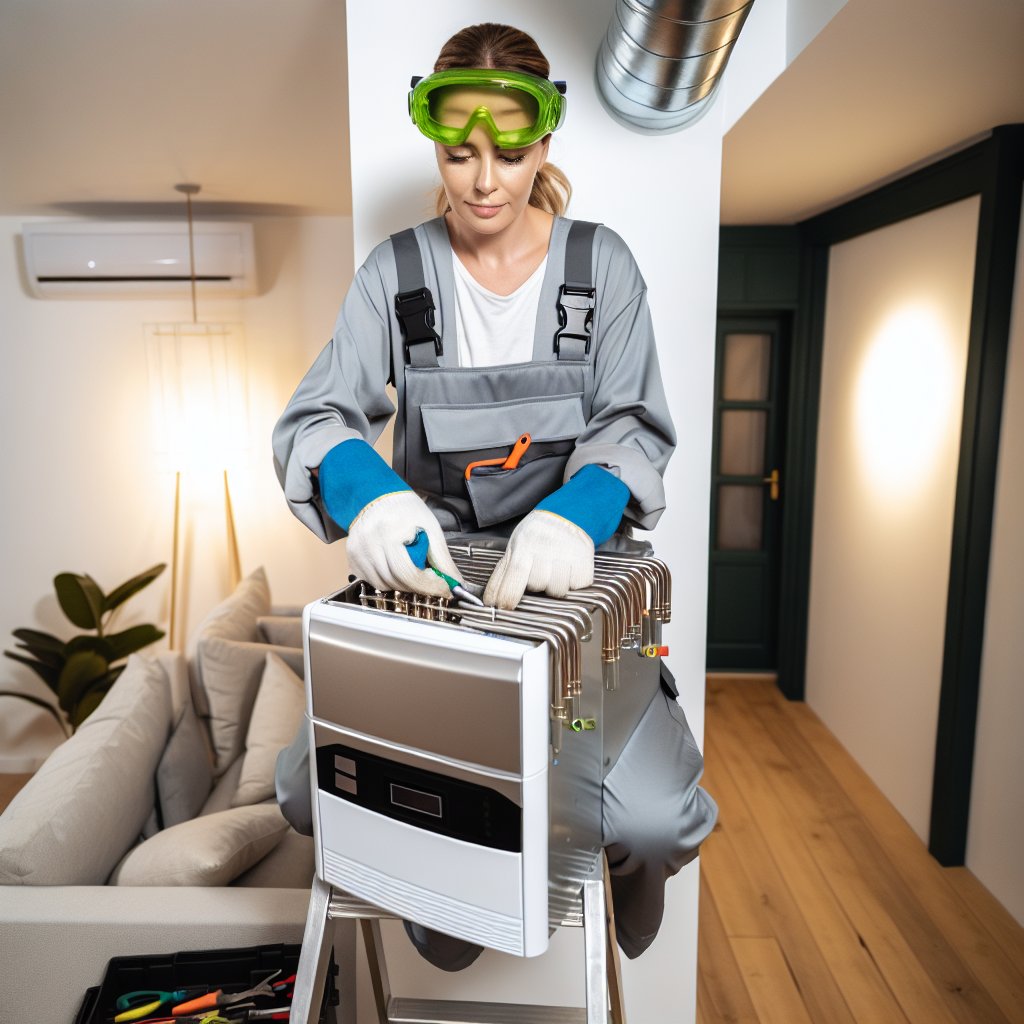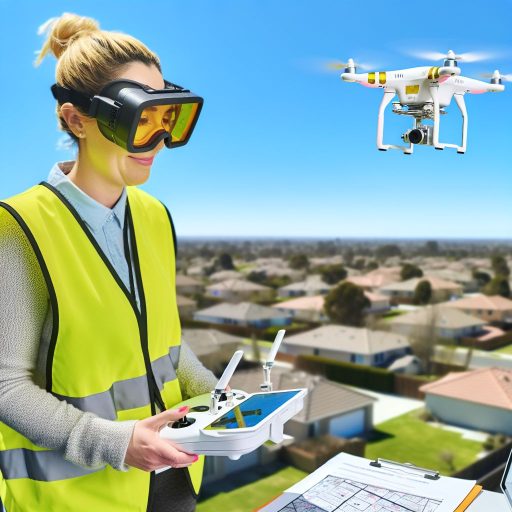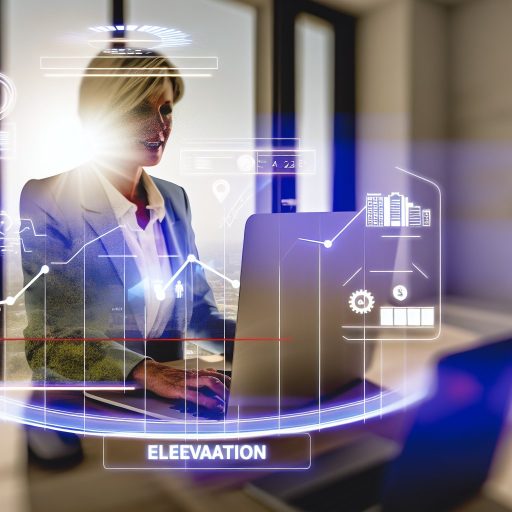Introduction to Sustainable HVAC Systems and Their Importance in Commercial Buildings
Sustainable HVAC systems play a crucial role in energy-efficient commercial buildings.
They significantly reduce energy consumption and operational costs.
Moreover, these systems minimize negative impacts on the environment.
In today’s climate, energy efficiency is more important than ever.
Businesses face increasing pressure to lower their carbon footprint.
For instance, adopting sustainable HVAC technologies can lead to a healthier workplace.
Furthermore, these systems can enhance the overall comfort of building occupants.
Investing in sustainable HVAC can increase property value as well.
Building owners can attract environmentally conscious tenants.
Additionally, governments often provide incentives for using green technologies.
This approach aligns with global sustainability goals and standards.
In summary, sustainable HVAC systems represent a smart investment for all stakeholders.
They not only save money but also contribute to a more sustainable future.
Now, let’s explore the components that make HVAC systems sustainable.
Components of Sustainable HVAC Systems
Sustainable HVAC systems comprise various technologies and strategies.
Energy recovery ventilators (ERVs) are essential in conserving energy.
They recycle indoor air and reduce the demand for heating and cooling.
Next, variable refrigerant flow (VRF) systems offer efficient temperature control.
These systems adjust outputs based on building occupancy and needs.
Additionally, smart thermostats automate temperature settings to optimize efficiency.
Furthermore, geothermal heating and cooling benefits from earth’s stable temperature.
These systems significantly reduce energy use over traditional methods.
Integrating renewable energy sources further enhances HVAC sustainability.
Solar panels can provide the necessary power for HVAC operations.
By combining these technologies, buildings achieve superior energy performance.
Next, let’s discuss the advantages of sustainable HVAC systems for commercial use.
Advantages for Commercial Buildings
Implementing sustainable HVAC systems offers numerous advantages.
First, they lower overall energy bills significantly.
Additionally, they often qualify for energy efficiency rebates and tax credits.
Second, these systems improve indoor air quality, promoting healthy environments.
Furthermore, they enhance occupant comfort through precise temperature control.
This leads to increased employee satisfaction and productivity.
Moreover, adopting green technologies helps meet regulatory requirements.
Many cities now enforce strict energy efficiency standards.
Lastly, sustainable HVAC systems support corporate social responsibility initiatives.
They demonstrate a commitment to sustainability and environmental stewardship.
Overall, investing in these systems makes strategic business sense.
Next, let’s explore the future of HVAC systems in commercial buildings.
Future Trends in HVAC Systems
The future of sustainable HVAC technologies looks promising.
Advancements in automation and artificial intelligence will enhance control systems.
These innovations will allow real-time monitoring and energy management.
Additionally, the integration of IoT devices will provide valuable data insights.
Furthermore, bio-based refrigerants are gaining popularity for their low environmental impact.
As regulations tighten, these modern refrigerants will become standard.
Moreover, prefabricated HVAC systems will streamline installation processes.
This trend will improve efficiency and reduce construction waste.
There is also growing interest in biophilic design that integrates nature with technology.
This approach enhances occupant well-being while maintaining energy efficiency.
Sustainable HVAC systems are essential for modern commercial buildings.
They offer economic, environmental, and social benefits.
Investing in these technologies is a step toward a sustainable future.
Key Principles of Energy Efficiency in HVAC Design
Optimizing System Performance
Efficient HVAC systems prioritize optimal performance in all operational aspects.
Regular maintenance ensures that equipment runs at peak capacity.
Upgrading outdated components improves overall system efficiency.
Incorporating smart technologies can enhance control over energy use.
Proper Sizing of Equipment
Correctly sizing HVAC systems prevents energy waste.
Oversized systems lead to frequent cycling, reducing efficiency.
Conversely, undersized systems struggle to maintain comfortable conditions.
Conduct thorough load calculations for accurate sizing before installation.
Utilizing Energy-Efficient Technologies
Energy-efficient technologies lower operational costs significantly.
Variable-speed compressors adjust according to load demands effectively.
Heat pump systems provide versatile heating and cooling options.
Implementing smart thermostats allows for better user control and energy savings.
Improving Building Insulation
Good insulation reduces the energy needed for heating and cooling.
Well-insulated buildings minimize air leaks and thermal loss.
Consider using materials with high insulation values in construction.
Proper insulation enhances overall system performance and comfort levels.
Implementing Renewable Energy Sources
Integrating renewable energy can enhance system sustainability.
Solar panels can power HVAC systems, reducing grid dependence.
Geothermal systems utilize the earth’s stable temperature for efficiency.
Evaluate local resources to identify feasible renewable energy options.
Monitoring and Adjusting Performance
Continuous monitoring of HVAC performance achieves optimal efficiency.
Install building management systems for real-time data analysis.
Use performance metrics to identify and address inefficiencies.
Regular adjustments based on monitoring data enhance system reliability.
Types of Sustainable HVAC Systems
Introduction to Sustainable HVAC Systems
Sustainable HVAC systems help reduce energy consumption in commercial buildings.
They enhance indoor air quality and overall comfort for occupants.
Moreover, these systems utilize renewable energy sources when possible.
Geothermal HVAC Systems
Geothermal systems use the Earth’s stable temperatures for heating and cooling.
They rely on underground pipes, which circulate a fluid to exchange heat.
This method significantly reduces energy costs over time.
Furthermore, geothermal systems have a low environmental impact.
Solar HVAC Systems
Solar HVAC systems harness solar energy for heating and cooling purposes.
They typically use solar panels to generate electricity or heat water.
This technology reduces reliance on fossil fuels.
As a result, it lowers greenhouse gas emissions.
Variable Refrigerant Flow (VRF) Systems
VRF systems use refrigerant to control heating and cooling throughout a building.
This method allows for precise temperature control in multiple zones.
Additionally, VRF systems are energy-efficient and adaptable.
They respond quickly to changes in temperature demands.
Energy Recovery Ventilation (ERV) Systems
ERV systems exchange stale indoor air with fresh outdoor air.
They capture energy from the outgoing air to precondition incoming air.
This approach minimizes energy loss while improving ventilation.
Consequently, ERV systems enhance indoor air quality and reduce costs.
Comparison of Systems
Each sustainable HVAC type has unique benefits and considerations.
- Geothermal systems are highly efficient but require significant upfront investment.
- Solar systems can be more affordable and sustainable with the right incentives.
- VRF systems offer flexibility and significant energy savings.
- ERV systems greatly enhance air quality and efficiency.
Deciding on the best option requires evaluating building needs and budget.
Consulting with HVAC professionals will ensure optimal system selection.
Delve into the Subject: Retail Property Development Process in Commercial Real Estate
Integration of Renewable Energy Sources with HVAC Systems
Harnessing Solar Energy
Many commercial buildings use solar panels to support HVAC systems.
These systems convert sunlight into electricity efficiently.
Solar power reduces reliance on grid electricity.
This integration significantly decreases operational costs.
Utilizing Geothermal Energy
Geothermal systems leverage the Earth’s stable temperature for heating and cooling.
They provide consistent energy savings throughout the year.
Also, these systems require less maintenance compared to traditional HVAC systems.
Incorporating Wind Energy
Wind turbines can be installed on-site to generate clean energy.
This energy can power HVAC units directly or charge batteries for later use.
Wind energy promotes energy independence for commercial buildings.
Benefits of Renewable Integration
- Reduces carbon footprint significantly.
- Enhances energy efficiency across operations.
- Lowers overall energy costs in the long run.
- Encourages a sustainable business model.
Case Studies of Successful Implementations
Companies like GreenTech Innovations have pioneered solar-integrated HVAC systems.
They demonstrated drastic reductions in energy costs.
Similarly, EcoBuild Enterprises utilizes geothermal energy in new constructions.
These examples illustrate the feasibility and effectiveness of renewable sources.
Discover More: Land Development for Land Banking Strategies
The Role of Smart Technology and Automation in Enhancing HVAC Efficiency
The Impact of Smart Technology
Smart technology transforms HVAC systems for commercial buildings.
These systems utilize advanced sensors and controls to optimize performance.
Moreover, automated functionalities adjust settings based on real-time data.
As a result, energy consumption decreases significantly.
Additionally, these systems enhance indoor air quality and comfort.
Integration with Building Management Systems
Integrating HVAC systems with building management systems is crucial.
This integration allows for centralized control of energy use.
Furthermore, it enables seamless communication among different building systems.
Consequently, facilities can identify inefficiencies quickly.
Staff can prioritize maintenance tasks effectively.
Benefits of Automation
Automation enables HVAC systems to operate more efficiently.
For instance, programmable thermostats adjust temperatures automatically.
This feature helps in reducing energy waste.
Moreover, predictive maintenance algorithms foresee potential issues.
Consequently, businesses can schedule repairs before problems escalate.
Data-Driven Decision Making
Data collected by smart HVAC systems informs better decision making.
Facilities can track energy usage patterns over time.
This information helps identify opportunities for improvement.
Additionally, managers can evaluate the effectiveness of energy-saving measures.
Ultimately, this data-driven approach supports long-term sustainability initiatives.
Case Studies and Real-World Applications
Many companies have successfully implemented smart HVAC systems.
For example, GreenTech Industries upgraded their HVAC to a smart system.
This upgrade resulted in a 30% reduction in energy costs.
Similarly, Urban Plaza Mall experienced improved HVAC efficiency after automation.
These examples demonstrate the tangible benefits of smart technology.
Gain More Insights: Sustainability Trends Driving Commercial Real Estate Market Changes

Regulatory Standards and Incentives for Sustainable HVAC Implementation
Importance of Compliance
Regulatory standards play a crucial role in shaping HVAC practices.
Complying with these standards ensures energy efficiency and environmental protection.
Sustainability regulations often set minimum efficiency requirements.
Additionally, they can include guidelines for refrigerants and emissions.
Key Regulatory Standards
In the United States, several key standards govern HVAC systems.
The Energy Policy Act dictates energy efficiency requirements.
Moreover, the ASHRAE (American Society of Heating, Refrigerating and Air-Conditioning Engineers) standards further enhance efficiency.
Internationally, the ISO (International Organization for Standardization) also provides guidelines.
Incentives for Sustainable Practices
Many governments offer incentives for sustainable HVAC implementations.
Tax credits can significantly reduce installation costs for energy-efficient systems.
Rebates from utility companies often encourage upgrading to modern technologies.
Furthermore, grants may be available for large commercial projects aimed at sustainability.
Impact of Incentives
Incentives make sustainable HVAC options more financially viable.
They encourage businesses to adopt energy-efficient technologies faster.
This shift contributes to overall energy conservation efforts.
Moreover, it positively impacts the environment and the economy.
Future Trends in Regulation and Incentives
Regulations are likely to become stricter over time.
As technology evolves, standards will adjust accordingly.
Future incentives may also evolve to prioritize innovative technologies.
Businesses should stay informed to adapt proactively to these changes.
Gain More Insights: Renewable Energy Solutions for Commercial Real Estate Development
Case Studies of Successful Sustainable HVAC Deployments in Commercial Settings
The Green Office Building Initiative
This project features automated HVAC systems for optimal energy usage.
The building utilizes smart thermostats and occupancy sensors.
These technologies reduce energy consumption significantly.
Furthermore, real-time data monitoring helps optimize system performance.
The Eco-Friendly Retail Space
A major retail chain implemented sustainable HVAC solutions in their flagship store.
They installed a geothermal heating and cooling system.
This system minimizes reliance on traditional energy sources.
Consequently, the store reduced its annual energy costs by 30%.
The Corporate Headquarters Transformation
A corporate office underwent a major HVAC system upgrade.
They opted for high-efficiency chillers and variable air volume systems.
This shift significantly reduced energy waste.
Moreover, the new systems improved indoor air quality remarkably.
The School District’s Energy Initiative
One school district embraced sustainable HVAC systems across multiple campuses.
They focused on retrofitting existing buildings with energy-efficient technologies.
As a result, energy costs decreased by 25% in the first year.
Students benefit from enhanced comfort and learning environments.
The Hotel Chain’s Sustainability Commitment
A prominent hotel chain invested in a state-of-the-art HVAC system.
This system incorporates renewable energy sources and advanced control features.
It allows for precise temperature regulation based on guest occupancy.
Thus, the hotel significantly improved sustainability ratings.
Future Trends and Innovations in Sustainable HVAC Technologies
Smart HVAC Systems
Smart HVAC systems revolutionize energy management.
They use advanced sensors and IoT technology.
This integration allows real-time monitoring of environmental conditions.
Moreover, systems can automatically adjust based on usage patterns.
Consequently, they enhance comfort while reducing energy wastage.
Geoexchange Technologies
Geoexchange systems leverage the earth’s natural temperature.
They provide significant heating and cooling efficiency.
In addition, these systems minimize reliance on fossil fuels.
Therefore, they contribute to lower greenhouse gas emissions.
Furthermore, their long-term operational costs are highly favorable.
Renewable Energy Integration
Integrating renewable energy sources is increasingly common.
Solar HVAC systems utilize solar panels for energy generation.
This approach ensures minimal environmental impact.
Additionally, wind energy can supplement HVAC operations.
As a result, buildings achieve higher energy independence levels.
Advanced Control Systems
Modern control systems enhance HVAC efficiency and performance.
They utilize AI algorithms for predictive analysis.
This capability allows proactive maintenance and optimization.
Consequently, energy consumption gets minimized significantly.
Moreover, these systems improve overall system longevity.
Decentralized HVAC Systems
Decentralized HVAC systems offer flexible cooling and heating solutions.
They operate independently for different building zones.
This innovation leads to customized climate control per area.
Furthermore, it lessens the burden on a centralized system.
Ultimately, it improves energy distribution and efficiency.
Energy Recovery Ventilation
Energy recovery ventilation maximizes energy efficiency in buildings.
These systems capture and reuse thermal energy from exhaust air.
Subsequently, they precondition incoming fresh air.
This process reduces the overall energy load on HVAC systems.
Moreover, they contribute to better indoor air quality.
Additional Resources
Breakthrough for sustainability in commercial real estate
Energy Efficient Commercial Buildings | Martin Selig Real Estate




